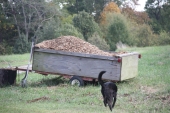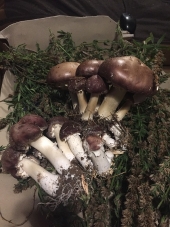

 1
1




Some places need to be wild

 11
11




List of Bryant RedHawk's Epic Soil Series Threads We love visitors, that's why we live in a secluded cabin deep in the woods. "Buzzard's Roost (Asnikiye Heca) Farm." Promoting permaculture to save our planet.










 2
2




Some places need to be wild










 3
3




Some places need to be wild










 1
1




Some places need to be wild














Some places need to be wild
 1
1




Healing our earthmother. Formerly Bryant Redhawk










 1
1




Some places need to be wild




Healing our earthmother. Formerly Bryant Redhawk














Some places need to be wild














Some places need to be wild
















List of Bryant RedHawk's Epic Soil Series Threads We love visitors, that's why we live in a secluded cabin deep in the woods. "Buzzard's Roost (Asnikiye Heca) Farm." Promoting permaculture to save our planet.














Some places need to be wild










 1
1




Some places need to be wild
 5
5




Fish heads fish heads roly poly fish heads










 1
1




Some places need to be wild














Some places need to be wild










 1
1




Some places need to be wild
 3
3




- "TheRainHarvester" on YouTube
 4
4


















Some places need to be wild










 1
1




Some places need to be wild










 1
1




Some places need to be wild










 1
1




Some places need to be wild










 1
1




Some places need to be wild
 1
1




Visit Redhawk's soil series: https://permies.com/wiki/redhawk-soil
How permies.com works: https://permies.com/wiki/34193/permies-works-links-threads














Some places need to be wild










 1
1




Some places need to be wild
 2
2




Fish heads fish heads roly poly fish heads














Some places need to be wild














 1
1




Some places need to be wild




Fish heads fish heads roly poly fish heads




We have a spot where we tend to dump cedar chips, because they take longer to decompose and although we don't worry about a few around our growies because we are surrounded by big cedars, we figure our growies will be happier with alternatives. But we have a "path" up a hill in our back field that turns into a mud-hole in the winter but that we have to use anyway. I've been dumping cedar chips on it for years and they decompose/get pushed into the mud/get grass growing over them just fine. It just takes a little longer, and in that location, longer is better. So I'm happy to have mixed chips, even happier if there's something green mixed in to get it to heat up a little, but I'll take any chips that come from non-sprayed land which is mostly what we get locally anyway, and if I want it to decompose faster, I'll mix veggie scraps in, use it as a burial mound, rotate it through our duck shelter, or frequently, all of the above!I also know that a pile of pure grey pine chips I had never really broke down. After being piled for 10 months and kept continuously wet the chips looked just like the day they were dumped.
Visit Redhawk's soil series: https://permies.com/wiki/redhawk-soil
How permies.com works: https://permies.com/wiki/34193/permies-works-links-threads














Some places need to be wild














Some places need to be wild
 2
2




Visit Redhawk's soil series: https://permies.com/wiki/redhawk-soil
How permies.com works: https://permies.com/wiki/34193/permies-works-links-threads














Some places need to be wild
 2
2




Visit Redhawk's soil series: https://permies.com/wiki/redhawk-soil
How permies.com works: https://permies.com/wiki/34193/permies-works-links-threads

|
Everyone is a villain in someone else's story. Especially this devious tiny ad:
The new purple deck of permaculture playing cards
https://www.kickstarter.com/projects/paulwheaton/garden-cards
|







